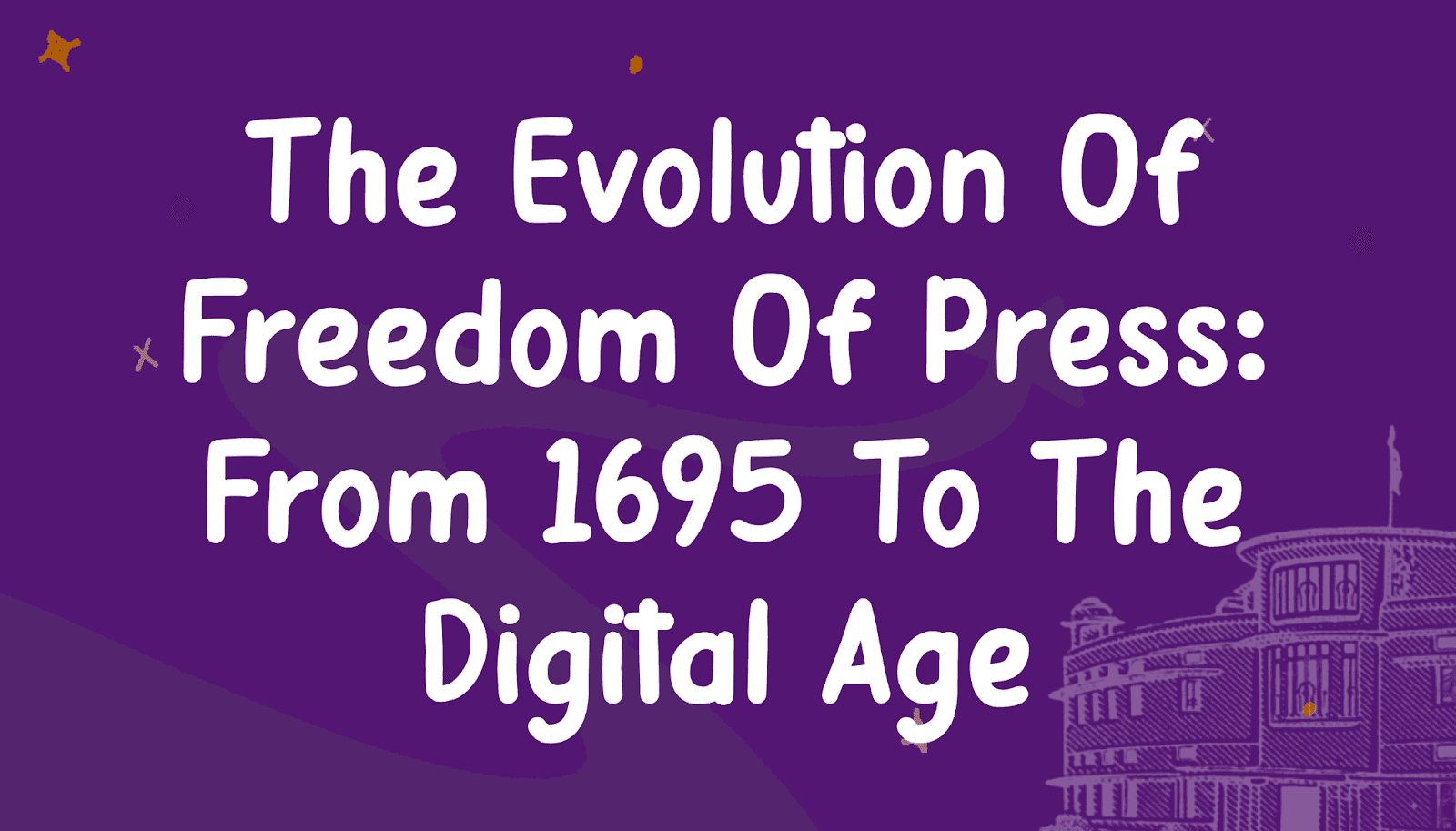Understanding India's Demographic Dividend for UPSC: Causes, Benefits and Challenges
Feb, 2025
•9 min read
Have you ever wondered what could be the game-changer for India’s economy in the coming decades? It’s something called the demographic dividend. So, what is the demographic dividend? Simply put, it’s the incredible economic potential that emerges when a country has a larger proportion of its population in the working-age group.
In this blog, we’ll journey through the causes that have set the stage for India’s demographic dividend. This deep dive will help you gain valuable insights into how India can turn its youthful energy into financial gain!
Significance of Studying Demographic Dividend for the UPSC Exam
Understanding the demographic dividend is crucial for UPSC aspirants as it intersects with multiple facets of the General Studies syllabus. This includes economy, society, and sustainable development. Let’s understand why it holds special importance.
- Economic Implications
It helps you to comprehend how demographic changes influence economic policies and development strategies. The demographic dividend can accelerate economic growth by increasing the labor force and enhancing productivity.
- Policy Formulation
Effective utilization of the demographic dividend requires comprehensive policies in education, healthcare, and employment. A thorough understanding of these policy dimensions equips you to analyze and suggest informed opinions.
- Social Impact
A youthful population can lead to greater innovation and dynamism within society. UPSC examinations test the ability to balance these social dynamics with economic objectives.
- Global Relevance
India’s demographic trends have global implications, influencing international labor markets, migration patterns, and geopolitical strategies. Recognizing these linkages helps to provide a holistic analysis in your answers.
- Current Affairs Integration
The demographic dividend is a recurring theme in current affairs, with ongoing debates about job creation, education reforms, and healthcare improvements. Staying updated on these developments is essential for scoring well in the UPSC exam.
Watch this video lecture for a comprehensive idea for your UPSC prep journey. Complete Study Schedule for UPSC CSE 2025 | SuperKalam | UPSC CSE
In the next section, let’s understand the core aspects of India’s demographic dividend.
Understanding India's Demographic Dividend for UPSC

1. What is the Demographic Dividend?
The demographic dividend refers to the accelerated economic growth potential that can arise when a nation experiences a decline in its dependency ratio. This ratio is the proportion of non-working age individuals (typically those younger than 15 and older than 64) to the working-age population (15-64).
2. India's Demographic Dividend
India is currently experiencing a demographic dividend, with a large and young working-age population. Around 65% of Indians are between 15 and 64 years old, and over 27% are between 15 and 29. This "youth bulge" presents a significant opportunity for accelerated economic growth.
3. Importance of Shifts in Age Structure
The shift in India's age structure towards a younger population has several crucial implications:
- Increased Labor Supply: A larger working-age population leads to a greater supply of labor, potentially driving economic growth.
- Higher Savings Rate: With a larger working-age population, the potential for savings increases, providing capital for investment and further economic expansion.
- Increased Consumption: A young population tends to have higher consumption demands, driving demand for goods and services and stimulating economic activity.
- Human Capital Development: Investing in education, skills development, and healthcare for the young population can enhance productivity.
Explore the ultimate UPSC preparation tool with our Mindmap Series. Simplify complex topics, visualize concepts, and enhance retention through structured, easy-to-follow mindmaps.
We will now explore the reasons why India stands to reap the benefits of a demographic dividend.
Causes of India's Demographic Dividend
India's demographic dividend is a result of several interacting factors:
1. Decline in Fertility Rates
- Improved Access to Family Planning: Increased availability and accessibility of contraceptives and government initiatives promoting family planning.
- Rising Female Literacy and Education: Educated women tend to have fewer children and delay childbirth, contributing to lower fertility rates.
- Increased Urbanization: Urbanization often leads to smaller family sizes due to higher living costs, limited space, and changing lifestyles.
- Improved Healthcare and Reduced Infant Mortality: Reduced infant and child mortality rates contribute to lower fertility rates as families no longer need to have many children to ensure survival.
2. Increased Life Expectancy
- Improved Healthcare and Sanitation: Advances in medical technology, improved access to healthcare services, and better sanitation practices have contributed to increased life expectancy.
- Better Nutrition: Improved nutrition, particularly among children and mothers, has significantly increased life expectancy.
- Control of Infectious Diseases: Successful public health programs targeting infectious diseases have contributed to declining mortality rates.
3. Population Structure Shifts
- The "Youth Bulge": The combined effect of declining fertility rates and increased life expectancy has resulted in a large proportion of the working-age population.
- Declining Dependency Ratio: This means a smaller proportion of the population is dependent on the working-age population, freeing up resources for investment and economic growth.
- Momentum of Past Population Growth: Even with declining fertility rates, the population continues to grow for a period due to the large number of women entering their reproductive years.
Also watch: Practice UPSC Prelims MCQs - Any topic, Anytime, Anywhere with your personal mentor - SuperKalam
Let’s look at the key benefits that India stands to enjoy from its demographic dividend.
Benefits of India's Demographic Dividend
India's demographic dividend offers several potential benefits. Let’s examine.
1. Economic Growth Potential
- Larger Workforce: A larger working-age population leads to increased production of goods and services, contributing to higher GDP growth.
- Increased Consumption: A young population drives demand for goods and services and stimulates economic activity.
- Investment Opportunities: The growing workforce and increased consumption create investment opportunities in various sectors.
2. Increased Labor Force and Productivity
- Abundant Labor Supply: The demographic dividend provides an abundant supply of labor, potentially lowering labor costs and attracting investment.
- Increased Productivity: With appropriate investments in education, skills development, and healthcare, the young workforce can be highly productive.
- Potential for Specialization and Innovation: A larger workforce allows for greater specialization and division of labor, potentially leading to innovation.
3. Higher Savings Rate and Capital Formation
- Increased Savings Potential: A larger working-age population has the potential to generate higher savings, providing capital for investment in infrastructure, businesses, and other productive assets.
- Capital Accumulation: Higher savings can lead to increased capital formation, which is essential for long-term economic growth and development.
- Investment in Human Capital: Increased savings can also be channeled towards investments in education, healthcare, and skills development, further enhancing human capital and productivity.
4. Technological Advancement and Innovation
- Young Workforce Adaptability: A young workforce is generally more adaptable to new technologies and innovations, facilitating technological progress.
- Entrepreneurial Potential: A young and dynamic population can foster entrepreneurship and innovation, driving economic growth and creating new job opportunities.
- Increased Demand for Skilled Labor: Technological advancements can create demand for skilled labor, incentivizing individuals to acquire higher education and specialized skills.
5. Global Competitiveness and Reduction in Poverty
- Enhanced Global Competitiveness: A large, skilled, and productive workforce can enhance India's global competitiveness in various sectors.
- Export-Oriented Growth: The demographic dividend can support export-oriented growth by providing a competitive labor force for manufacturing and other export-oriented industries.
- Poverty Reduction: Increased employment opportunities and higher incomes resulting from the demographic dividend can contribute to poverty reduction and improved living standards.
Looking for a detailed roadmap to kickstart your UPSC journey? Check out our comprehensive guide for beginners at SuperKalam UPSC Roadmap.
In the next section, let’s look at the key challenges that India needs to overcome to maximize its demographic dividend.
Challenges of India's Demographic Dividend

While India's demographic dividend presents significant opportunities, several challenges must be addressed to realize its full potential.
1. Job Creation and Employment Issues
- Lack of Quality Job Creation: The Indian economy needs to create sufficient quality jobs to absorb the growing workforce. The current trend of jobless growth is a major concern.
- Skill Gaps and Mismatches: A significant portion of the workforce lacks the skills and education required for the available jobs, leading to skill gaps and mismatches.
- Informal Employment: A large proportion of the workforce is employed in the informal sector with limited access to social security benefits.
2. Quality of Education and Skill Development
- Low Educational Attainment: Despite increasing access to education, educational attainment levels in India remain relatively low compared to other developing countries.
- Poor Quality of Education: The quality of education needs significant improvement to equip students with the necessary skills and knowledge.
- Inadequate Vocational Training: Vocational training and skill development programs must be strengthened and aligned with industry needs.
3. Healthcare and Human Development
- Malnutrition and Health Issues: Malnutrition, particularly among children and women, remains a significant challenge, impacting health and productivity.
- Inadequate Healthcare Infrastructure: India's healthcare infrastructure is inadequate to meet the needs of its growing population, particularly in rural areas.
- Lack of Access to Quality Healthcare: Many people lack access to quality healthcare services, which can impact health outcomes and productivity.
4. Social and Infrastructure Deficiencies
- Gender Inequality: Gender inequality persists in various aspects of life, including education, employment, and healthcare.
- Infrastructure Gaps: Inadequate infrastructure, including transportation, energy, and sanitation, constrains economic growth and development.
- Social Unrest and Inequality: Social unrest and inequality can arise if the benefits of economic growth are not distributed equitably.
Struggling to choose the right optional subject for UPSC? Discover how to make an informed and strategic decision with our comprehensive guide.
We will now look at the key areas where policy action needs to be taken for reaping India’s demographic dividend.
Policy Measures for Reaping Demographic Dividend
India's demographic dividend presents a unique window of opportunity for accelerated economic growth and development. Realizing this potential requires strategic policy interventions. Let’s understand each of them in detail.
1. Investment in Education and Healthcare
- Enhanced Educational Infrastructure: Increase public spending on education, focusing on building and upgrading schools, colleges, and universities, particularly in underserved areas.
- Quality Enhancement in Education: Improve teacher training, curriculum development, and assessment methods to enhance the quality of education at all levels.
- Universal Healthcare Access: Expand access to quality healthcare services through strengthening primary healthcare centers, building hospitals, and promoting health insurance schemes.
- Public Health Programs: Implement targeted public health programs to address malnutrition, communicable diseases, and non-communicable diseases.
2. Promotion of Skill Development and Training
- Skill Development Initiatives: Strengthen existing skill development programs and launch new initiatives aligned with industry demands.
- Vocational Training and Education: Integrate vocational training into the mainstream education system and expand opportunities for vocational education at all levels.
- Public-Private Partnerships: Foster collaborations between government, industry, and training institutions to ensure relevant and effective skill development programs.
- Apprenticeships and Internships: Promote apprenticeships and internships to provide practical work experience and enhance employability.
3. Encouraging Entrepreneurship and Job Creation
- Ease of Doing Business Reforms: Continue simplifying regulations, streamlining bureaucratic processes, and improving the business environment to encourage entrepreneurship and investment.
- MSME Support: Provide targeted support to Micro, Small, and Medium Enterprises (MSMEs) through access to finance, technology, and marketing assistance.
- Startup Ecosystem Development: Strengthen the startup ecosystem by providing incubation support, mentorship, and access to funding.
- Labor Market Reforms: Implement labor market reforms to improve flexibility and efficiency while ensuring worker protection.
Also watch: What NCERTs (OLD & NEW) to study for UPSC IAS Exam - All you need to know
In the next section, let’s look at the role of gender equality and human capital in reaping India’s demographic dividend.
Role of Gender Equality and Human Capital in Reaping Demographic Dividend

Gender equality and human capital development are crucial for maximizing the benefits of India's demographic dividend.
1. Increasing Female Workforce Participation
- Economic Empowerment of Women: Increased female labor force participation translates directly into higher economic output and overall GDP growth.
- Enhanced Productivity and Innovation: A diverse workforce brings a wider range of perspectives and skills, leading to increased productivity and innovation.
- Social Benefits: Greater female workforce participation has positive spillover effects on families and communities, including improved health outcomes for children.
- Reduced Gender Inequality: Promoting women's economic independence challenges traditional gender roles and empowers women in other spheres of life, leading to greater gender equality.
2. Policies for Gender Equality
- Addressing Gender Discrimination: Implement policies to eliminate gender discrimination in education, employment, and access to resources.
- Promoting Education for Girls: Ensure equal access to quality education for girls at all levels, from primary school to higher education.
- Maternity and Childcare Support: Provide affordable and accessible childcare services and maternity benefits to enable women to balance work and family responsibilities.
- Property Rights and Inheritance: Secure women's property rights and ensure equal inheritance laws to empower women economically.
3. Building Human Capital through Education and Skills
- Quality Education: Invest in quality education at all levels, focusing on foundational literacy and numeracy, critical thinking, and problem-solving skills.
- Skill Development Programs: Implement targeted skill development programs aligned with industry needs to equip the workforce with relevant skills for the 21st-century economy.
- Lifelong Learning: Promote lifelong learning opportunities to enable individuals to adapt to changing job market demands and acquire new skills throughout their careers.
- Investing in Healthcare: Improve access to quality healthcare services to ensure a healthy and productive workforce.
Want insider intel on how to ace the UPSC Mains answer writing? SuperKalam's AI instantly evaluates your practice answers, and you can discuss them LIVE with expert mentors.
These factors play a major role in maximizing India’s demographic potential. Let’s wrap up this topic with a brief conclusion.
Conclusion
India's demographic dividend is more than just a statistic—it's a golden opportunity to propel our nation toward societal advancement. Strategic planning and policy implementation are essential to fully harness this potential. At SuperKalam, we believe in empowering you to seize this opportunity. Our tailored resources are designed to help you become the best version of yourself for UPSC preparation.
- Expert Notes on Any Topic: Gain in-depth knowledge on topics like the demographic dividend through expert notes.
- Practice Unlimited MCQs: Engage with unlimited practice questions for Prelims tailored to the topics of your choice.
- Mains Answer Evaluation: Get your Mains answers evaluated in minutes with UPSC standards and get a model answer for the same.
- Track Your Progress: Keep track of your preparations with daily targets, weekly reports, and leaderboards!
Stay focused, stay determined, and let SuperKalam help to turn your UPSC dreams into reality.


